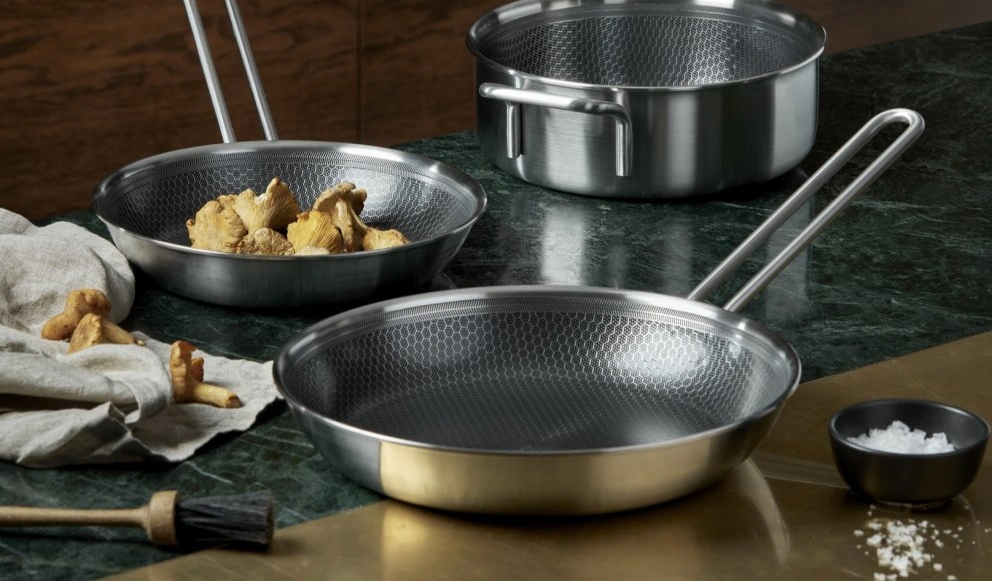First of all, it should be mentioned that despite its name aren't ceramic pans actually completely ceramic. They are made of metal (usually stainless steel with an aluminium core) and only have a non-stick ceramic surface based on silica. This is one of the most common compounds found in nature and in our everyday lives, it is, for example, a component of sand or soil, some fungi contain it and it is also an integral component of glass or ceramics.
Usually ceramic pans are a little heavier and generally less non-stick if you want to prepare food completely without fat. However, they are free of PFOA and PTFE. They are also more scratch resistant and can handle higher temperatures compared to traditional non-stick surfaces. Even so, when using them, it is important to observefollow certain rules.

Let's compare
Ceramic pans vs. other non-stick pans

.jpg)



- First, decide what you will prepare most often in the ceramic pan and then choose a shape, depth and sizethat best suits you.
- Choose a pan that has good thermal conductivity, which ensures even heat distribution and prevents scorching. These are often pans with an aluminium or copper core.
- Don't forget check compatibility with different types of hobs, especially if you cook with induction.
- Check that the pan is ergonomic and thermally insulated handle.
- Functional features are essential, but don't forget about design - Cooking is simply easier with stylish utensils.
- Remember that a ceramic pan will not last forever and will need to be replaced after a while. So choose a ideal "performance price" ratio.
- Look for ceramic pans that have inhigh number of great reviews.
Quality ceramic pans

How to use ceramic pans
Before using the pan for the first time, wash it with warm water and a soft sponge with a mild detergent and then dry it thoroughly. The manufacturers recommend gently brushing the surface of the pan with a little oil.
When preparing food, only use utensils made of soft materials such as wood, silicone or plastic to avoid scratching the ceramic surface. Avoid metal utensils completely.
Ceramic pans are best used at medium temperatures, but can withstand high temperatures. Avoid rapid temperature changes, for example, never put a hot pan in cold water.
How to clean ceramic pans
Although hand washing is considerably more gentle, many manufacturers state that ceramic pans can be washed in the dishwasher. Remember that the pan must be perfectly dry before storing it. Completely avoid abrasive cleaners and harsh sponges that can erode the surface.
Store ceramic pans in such a way as to avoid scratching their surface. So either put them separately in kitchen cabinets or hang them up, if you're struggling for space in the kitchen then use racks or line the pans with washers.
If your ceramic pan is losing its non-stick properties, you can cook on it temporarily using fat, but it's a good idea to start looking for a new one.

German pan manufacturerWMF specializes in high quality non-stick pans, which are known especially for their high durability.
Another German brand, Fissler, offers ceramic pans that combine traditional craftsmanship with innovative technologies.
